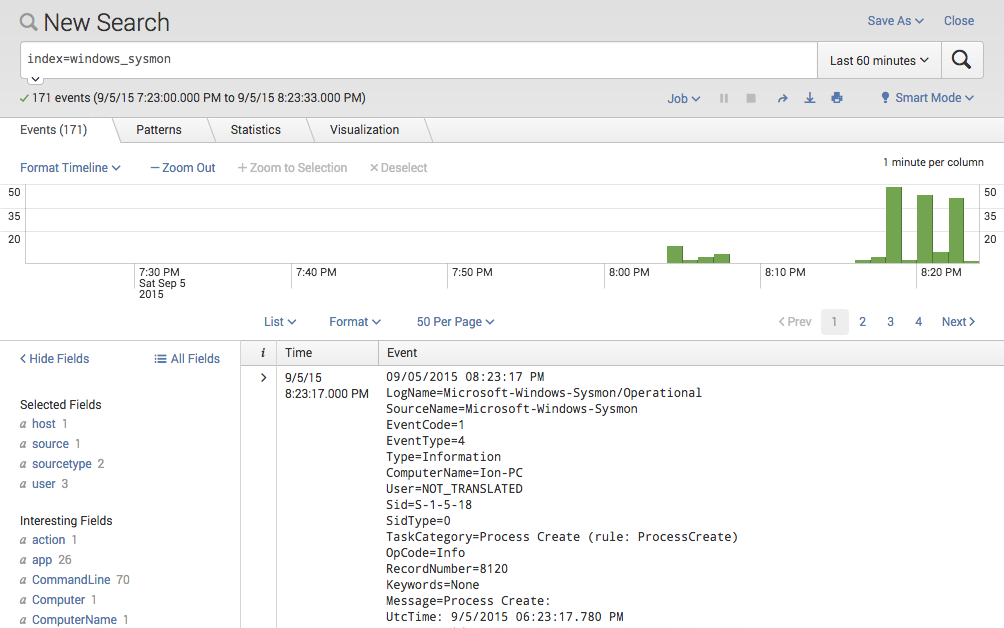
- #SPLUNK DEFINITION HOW TO#
- #SPLUNK DEFINITION MANUAL#
- #SPLUNK DEFINITION SERIES#
Interlude: A Little Bit About FluentD And Firelensīefore we get too far down the road, it’s best to talk a little bit about what Firelens and FluentD are, and why they’re relevant.
Save the changes and review the bucket settings. If you intend to export data from your container to your S3 bucket, then write permissions are also required. The S3 log delivery group needs at minimum read and list permissions. 
After the bucket is created, open the bucket and modify the permissions.Once everything is set, create the new bucket.
#SPLUNK DEFINITION SERIES#
We’ll be using our IAM roles created in part 1 of this series to grant S3 access to our instance and containers.
Provide the region where you want the bucket to live - It is important that this region is the same location where you’ll be building your ECS cluster and the same region where we’ll be defining our tasks.įor security reasons, it’s important to block all public access. From here, create a new bucket and give it a name. In the next part of this blog series we’ll be configuring an EFS file store for Fargate. In the case of ECS clusters, because we have a physical dedicated vm hosting our tasks we can access S3 buckets without much issue. Although an EFS file system can be used with an ECS container instance, opt to use S3 whenever possible. S3 buckets are more efficient to run than EFS systems and have tighter integration with CloudWatch. The last thing we’ll need to configure before building our ECS cluster is set up an S3 location and bucket to hold our configurations. Now, on to storage! Creating An S3 Storage Bucket Security Group: “ ECS Container Instance SG” Save and make note of the security group name as we’ll be needing it later. Using ‘Anywhere’ here is risky but if you’re having trouble connecting to your instance SSH: Your workstation IP, Domain or location. If you don’t know, leave this as your default. VPC - This will have to be the same VPC we’ll be using for our tasks, storage buckets etc. Create a new security group, providing the following:. From the EC2 console, select Security Group under the Network and Security Heading. Next, we will configure a new security group for web and ssh access to and from the container instance vm. Now that we have our private key pair, we need to create a new AWS security group for access to and from the container instance Creating A New Security Group If you lose this file, you will need to create a new key pair. Be careful as this is the only time it will download. Add a tag if desired (it’s optional, but best practice). In most cases we’ll be connecting via SSH, so choose PEM format if that’s your tool of choice, or choose PPK if you’re using a PuTTY terminal in Windows. From there, under Network and Security > create a new key pair. Although not required to run an ECS container instance, it’s a good idea to have one on-hand if the Docker (or future ContainerD) runtime is having problems. #SPLUNK DEFINITION MANUAL#
Creating A New Key PairĬreating a key pair will allow us to access the container instance OS should we need to do any manual configuration. Specifically, we’ll need a key-pair for SSH access to our instances, a viable security group and an S3 storage bucket.
Splunk HEC Token: xxxxxxxx-xxxx-xxxx-xxxx-xxxxxxxxxxxxĮCS is fairly straightforward to configure, but we’ll be relying on a few components to help manage our EC2 Container Instances. Splunk HEC Index: scratch (the name of the index you configured in your HEC). 

Splunk HEC server ( Splunk Enterprise): (Splunk Enterprise).AWS Task Execution Role: ecsTaskExecutionRole (the name of the role to run ECS tasks).AWS ECS Instance Role: ecsInstanceRole (the name of the role to run container instances).AWS CloudWatch Log Group: SplunkECS (the name of the log group).AWS Region: US-East-1 (the region you’re working in).In order to follow the remainder of this post in the series, you will need the following information that we defined in the last part: In this segment in the series we will be focusing on building an ECS cluster, defining tasks and deploying a simple container that routes its application logs to Splunk with Firelens.Īs a quick recap, in part 1 we configured a CloudWatch log group and two IAM roles that will be required for this walkthrough along with an HTTP Event Collector and index within Splunk.
#SPLUNK DEFINITION HOW TO#
In part 1, " Splunking AWS ECS Part 1: Setting Up AWS And Splunk," we focused on understanding what ECS and Fargate are, along with how to get AWS and Splunk ready for log routing to Splunk’s Data-to-Everything platform. W elcome to part 2 of our blog series, where we go through how to forward container logs from Amazon ECS and Fargate to Splunk.







 0 kommentar(er)
0 kommentar(er)
